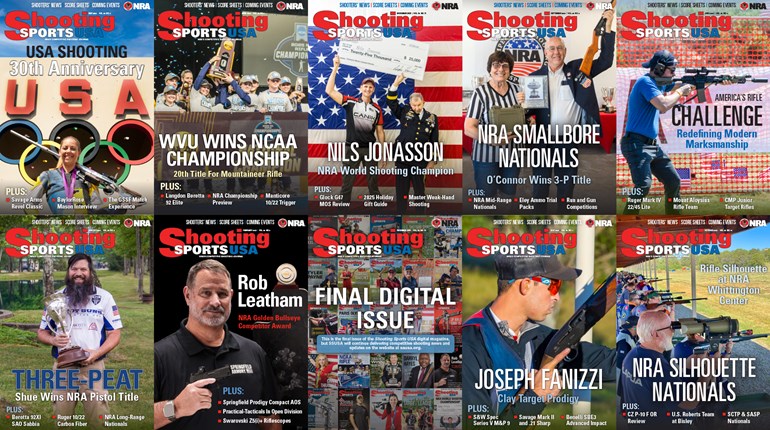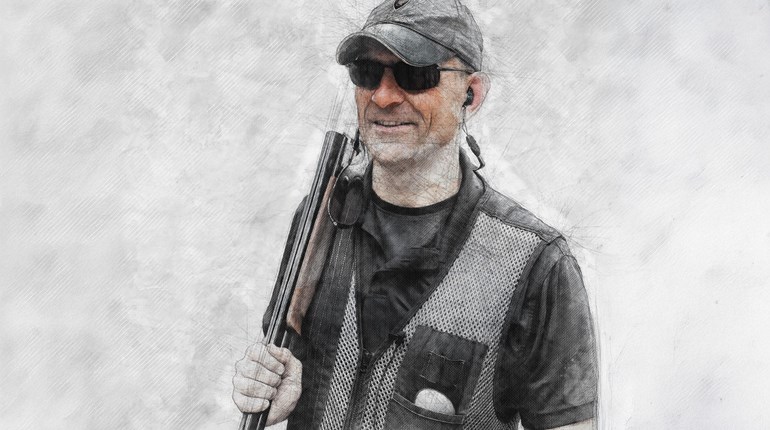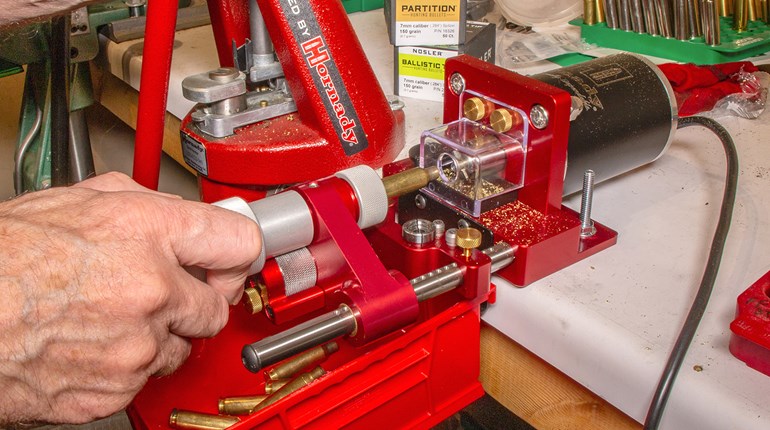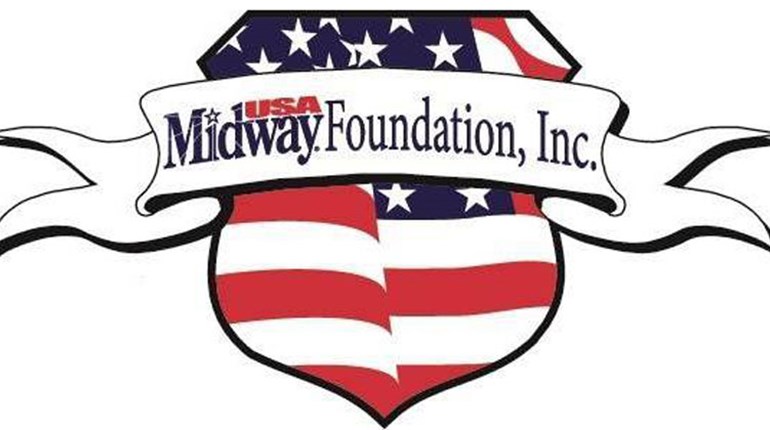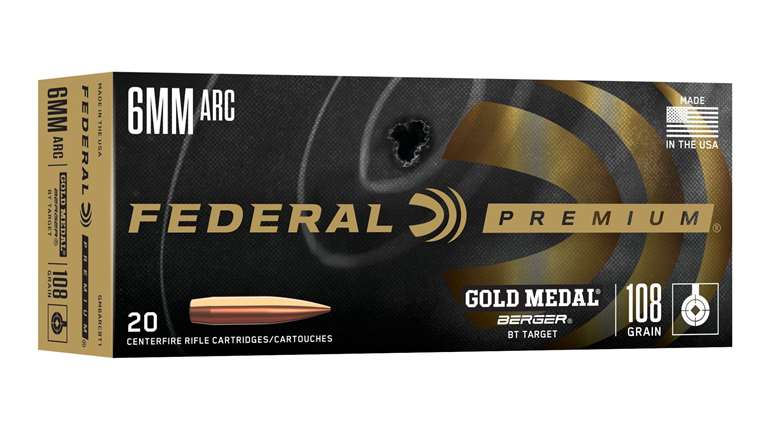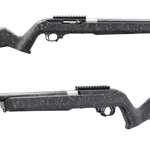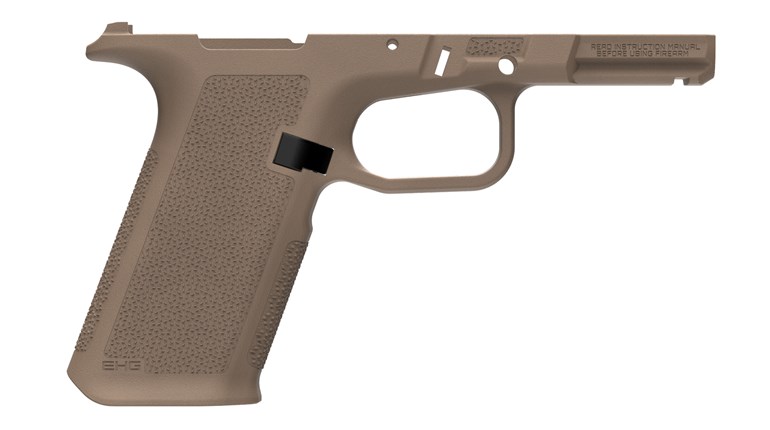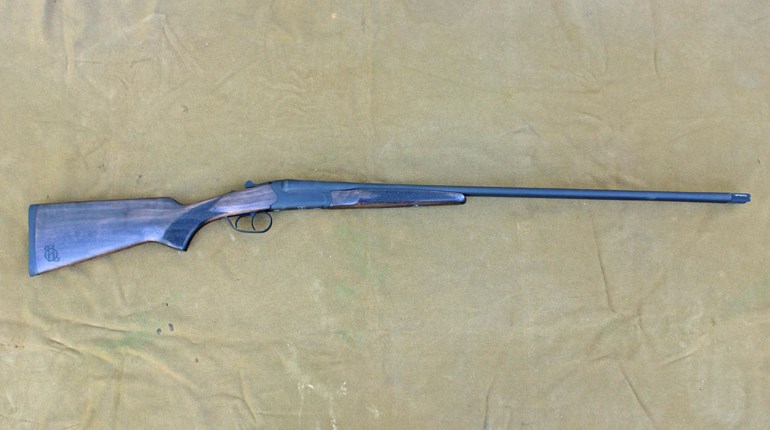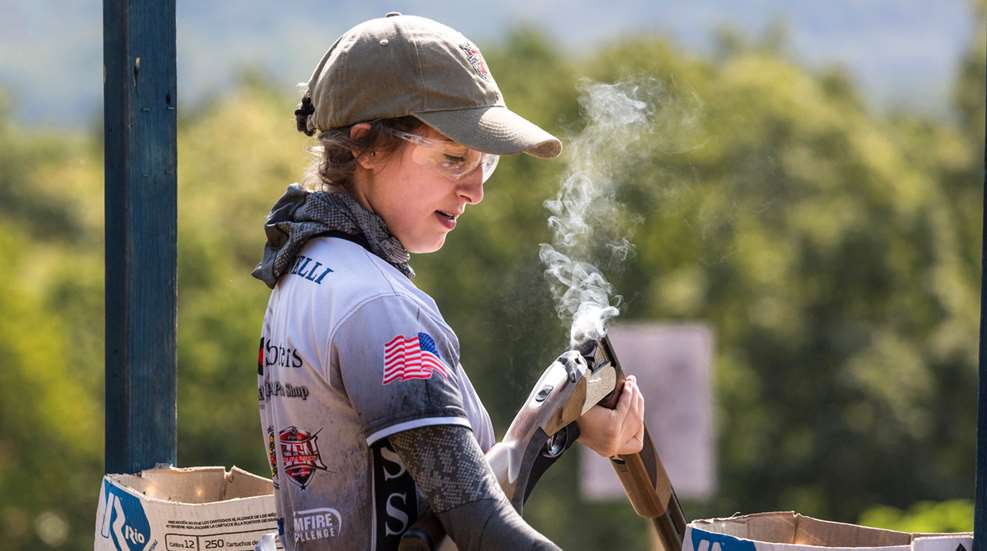
Now in its sixth consecutive year, the NRA World Shooting Championship (WSC), again held at the Peacemaker National Training Center (PNTC) in beautiful Glengary, WV, boasted motivated staff, enthusiastic competitors and pleasant weather, all aligning to create an unforgettable experience for those involved. The 2019 competition included a noteworthy first: crowning the first two-time champion, Greg Jordan, who previously won back in 2017. This year, he received a prize check for $25,000.
One of the things that makes the WSC so unique is the comprehensive set of skills it tests. From busting clays, to stacking dimes, to running and gunning, almost every conceivable popular shooting discipline is represented somewhere on the Peacemaker shooting grounds. Adaptability, therefore, is key. This is true both in shooting disciplines, and in the ability to quickly learn new equipment on the fly, as all stages are shot with provided equipment. Aside from this, several other skills stand out which crossover between multiple stages, with speedy target transitions being chief among them. There’s a lot more to the World Shoot than can be told in a single paragraph or two, however. After all, if it were that easy to describe, it wouldn’t be near as fun or as challenging to shoot. Read on for a stage-by-stage breakout of this truly unique event, which somehow quantifies almost every shooting skill imaginable into a single score.
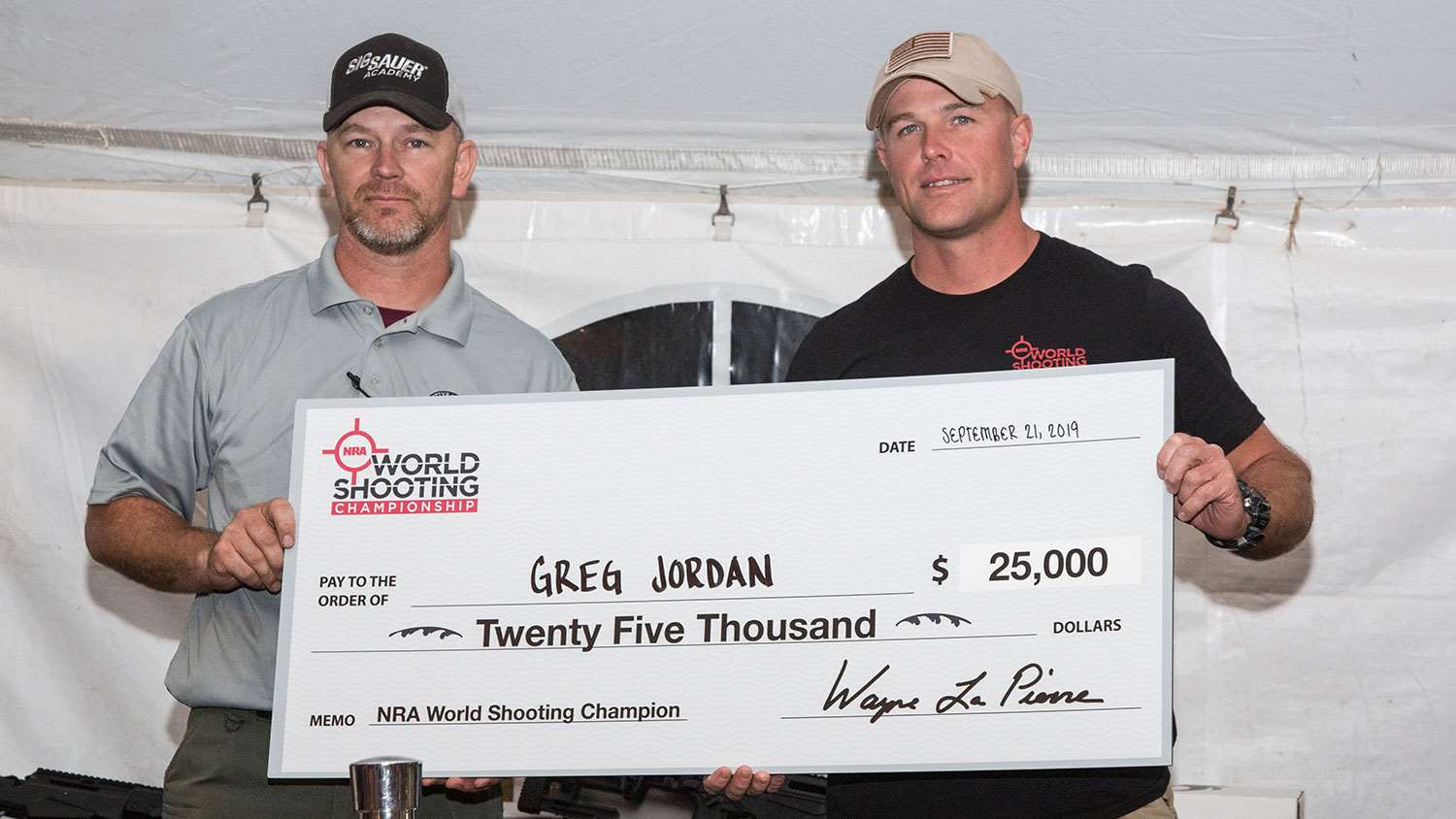
Stages 01 & 02
Mossberg came out in a big way this year, sponsoring two separate main stages and stocking both with its International Silver Reserve II Super Sport shotguns. Crazy Quail, meanwhile, who also sponsored a side stage of its own, volunteered several of its revolutionary machines to launch clays. The first of these stages saw two shooters approach the line at the same time, firing at six pairs from their original position, then switching with their co-shooter and (hopefully) downing the other six.
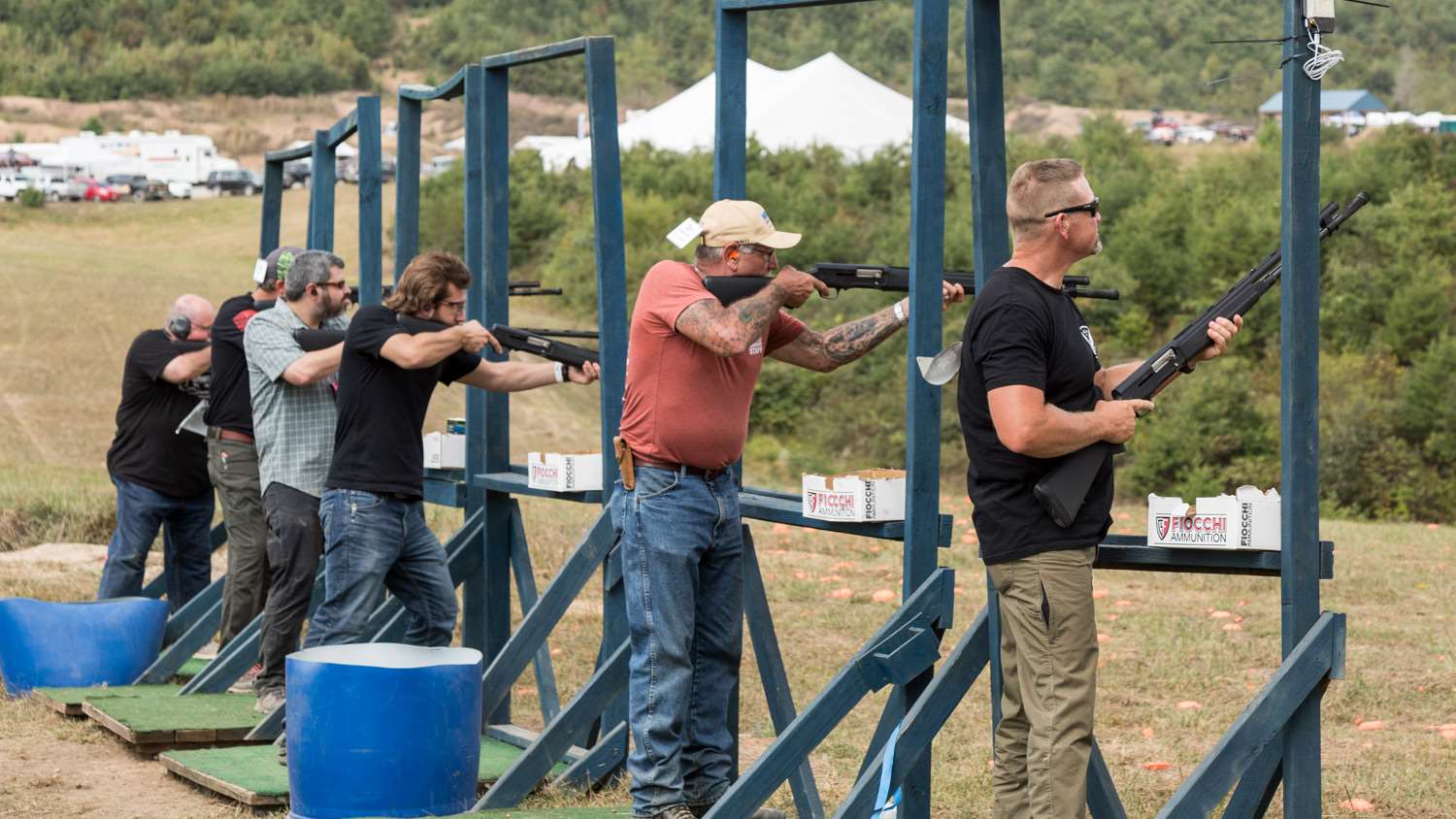
Stage Two was similar, but divided up differently. Rather than standing next to each other on a line, shooters went to two separate stations in the woods, attempting to down four true pairs and one report pair at one post, and four true pairs at the other. It took an experienced eye to down some of these discs, which leapt swiftly from the thick brush and, in some cases, seemed to disappear almost as quickly. For those who already arrived with a few clays under their belt, however, the match provided a fun spot to showcase their skills, with several competitors managing to game some of the closer-flying clays to down both in one shot—always a spectator favorite. The shade of the treeline also made this a nice spot for avoiding the heat of the afternoon sun, an added bonus for those working and watching.
It was at Stage Two that I caught up with several staff members, including one man, a machinist from Maryland, who had initially seen the WSC on the Outdoor Channel’s Shooting Gallery, hosted by Michael Bane. He decided it looked like an interesting chance to try out some disciplines he was less familiar with, as all firearms and ammunition are provided, and resolved to give it a try. Unfortunately, by the time he went to sign up, all competitor slots were filled. Undeterred, he decided to look for different ways to attend the event, and noticed he could shoot in the staff match if he helped work the event. Figuring it would give him a good opportunity to try it out, he went ahead and signed up. That was the second annual WSC, and he has come back as a staffer every year since, valuing the inside perspective it gives him on the event over and above simply competing. This was just one testimony out of many I heard regarding the fun and camaraderie so many have found at the WSC.
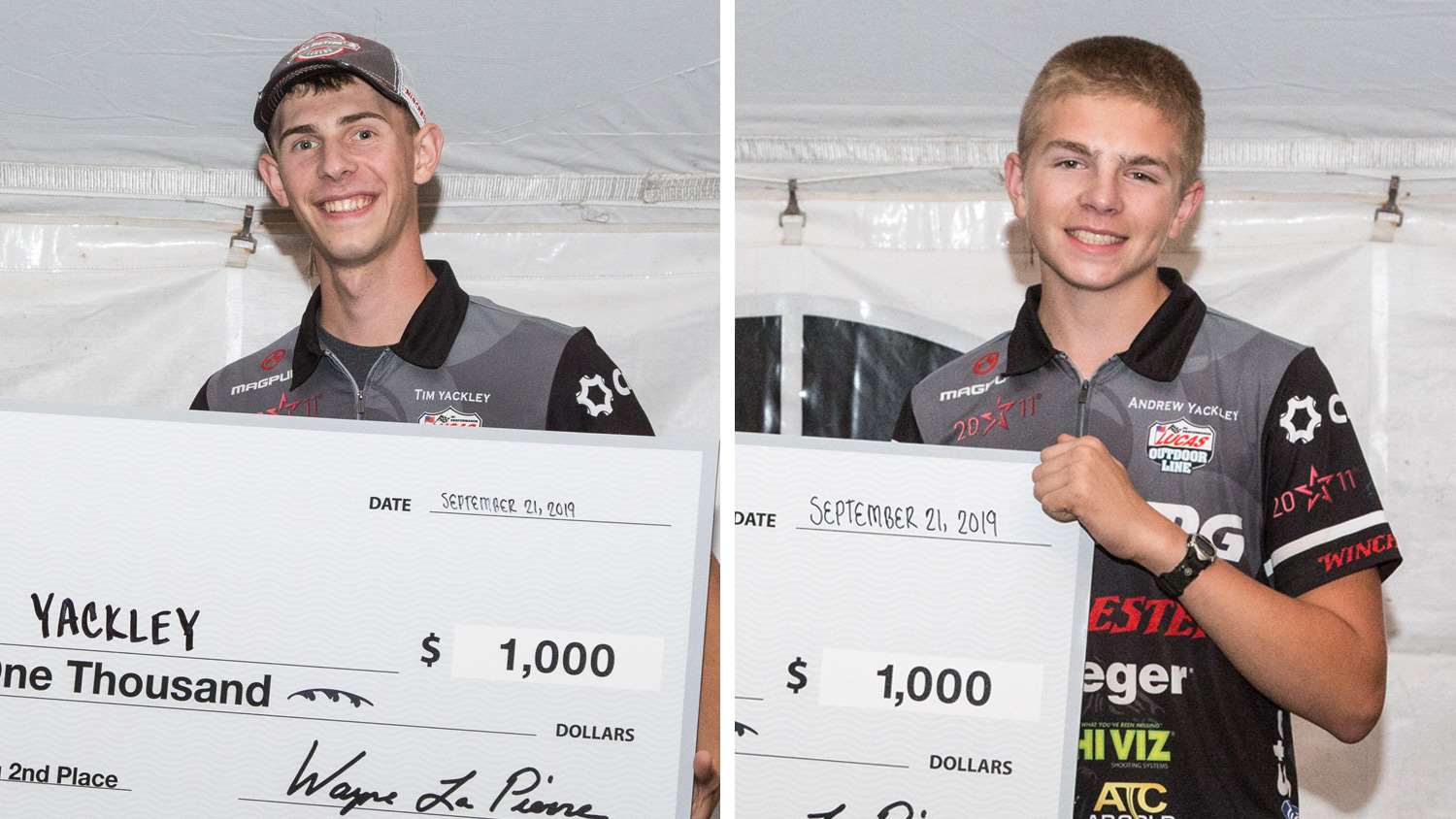
Stage 03
The aptly named third stage, sponsored by Smith & Wesson, featured the ever-popular 3-gun match. With staffers standing by constantly topping off AR magazines with a Butler Creek electric magazine loader, it’s not hard to figure the sheer volume of fire this course entailed—38 rounds were available for hits on 21 possible targets. Starting with the aforementioned rifle, the shooter ran downhill through the woods, moving sequentially to pistol, then shotgun, trying to blaze as fast a time as possible while still staying accurate. Being both fast-paced and wooded, this one was a little hard to follow, but from what I could see was an abject pleasure to shoot.
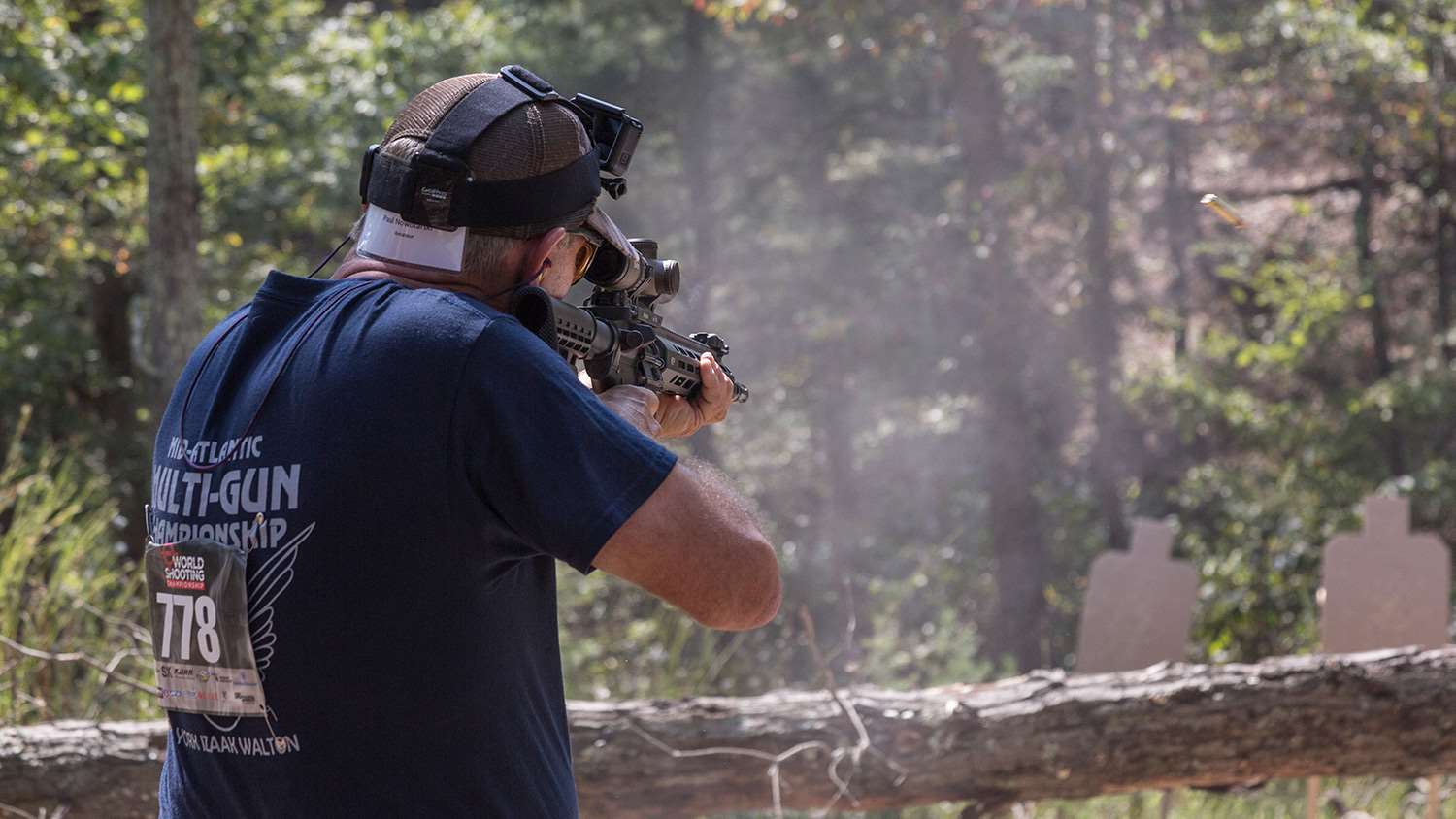
Stage 04
Biathlon was moved from its grassy location of last year to one of the normal shooting berms this year, but retained its usual format. Competitors were made to carry weighted ammo cans—one in each hand—across the rear of the firing line, before picking up two more and carrying those back across, all before ever touching a rifle. When they did touch that rifle, it was a Magnum Research MLR22AT in .22 LR, with which they had to clean two plate racks (six targets on each) 50-yards distant, from a standing position, with only 20 rounds available. One of the hardest events of the day, I saw a few folks come close to cleaning the stage, but none did so completely.
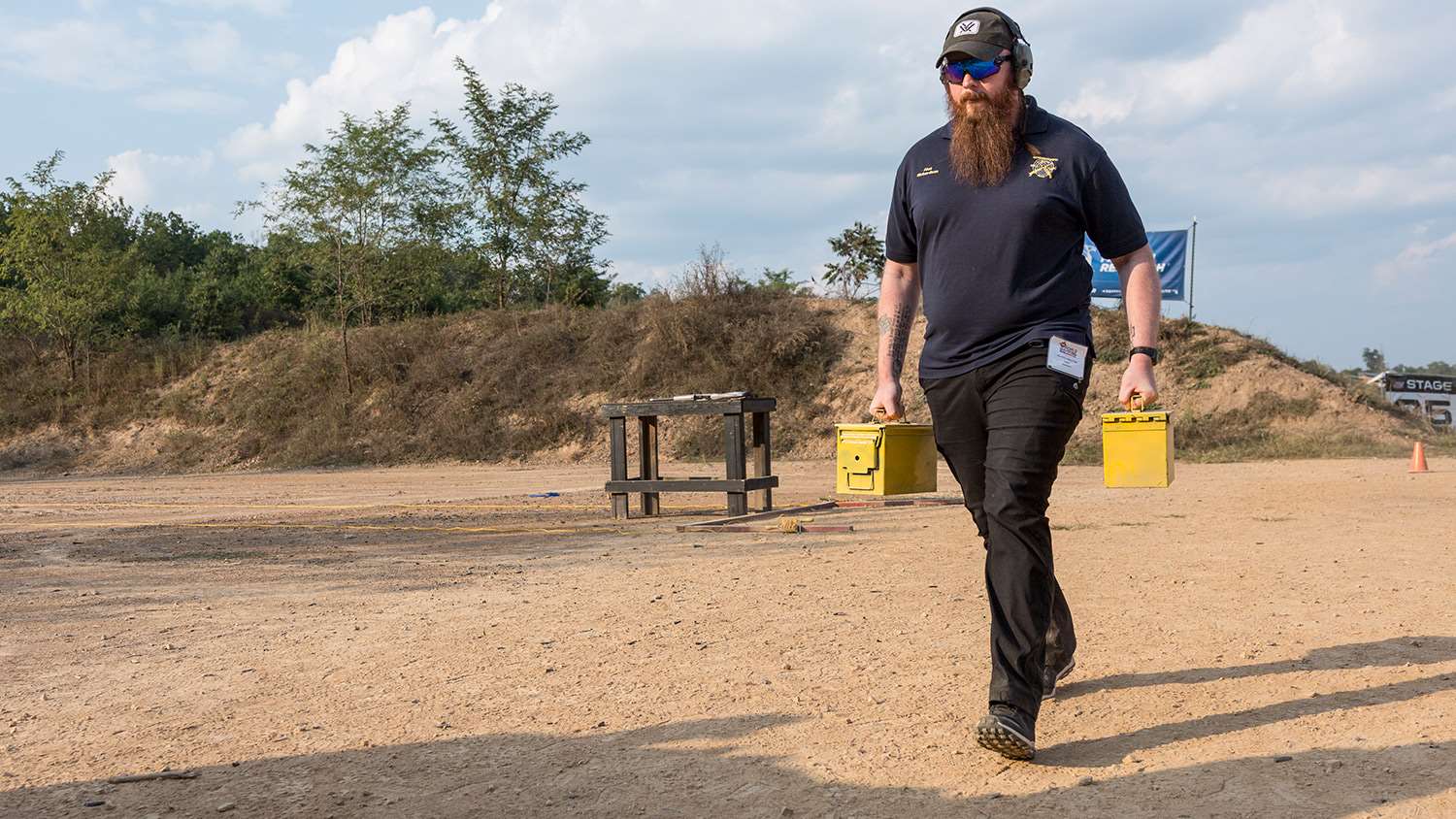
It was here that I caught up with one Alex Richardson, who exhibited some fine shooting with the little rimfire. Initially surprised by his accent, I discovered he was part of a team from southwest England, and had hopped all the way across the pond just to shoot this match. While they do have some shooting sports back home, such as shotgun and rimfire competitions, there was much at the World Shoot they had not had the opportunity to train in England, and thus were excited to try out. As this was Mr. Richardsons’s second year in attendance, I think it's safe to say he enjoys it—an observation I hope I can extend to the rest of his team. Mr. Richardson and the Englanders were also far from the only international competitors there. Though I did not manage to catch up with any of them, I heard that South Africa, Switzerland and several other countries were also represented.
Stage 05
With a 180-second par time, NRA America’s Rifle Challenge retained its position as a fan favorite. A field course replete with copious shoot/no shoot targets, there is nothing quite like moving and engaging targets at close range with America’s rifle. Shooters began with heels on the fault line, with a magazine loaded with 15 rounds in the rifle, safeties on and an empty chamber. From here, they had to engage all 11 targets with two rounds each (a second magazine was pre-staged on a barrel halfway down the course). This loose set of directions naturally leaves a lot of room for improvisation and, true to form, I did not see two shooters shoot the course the same way twice.
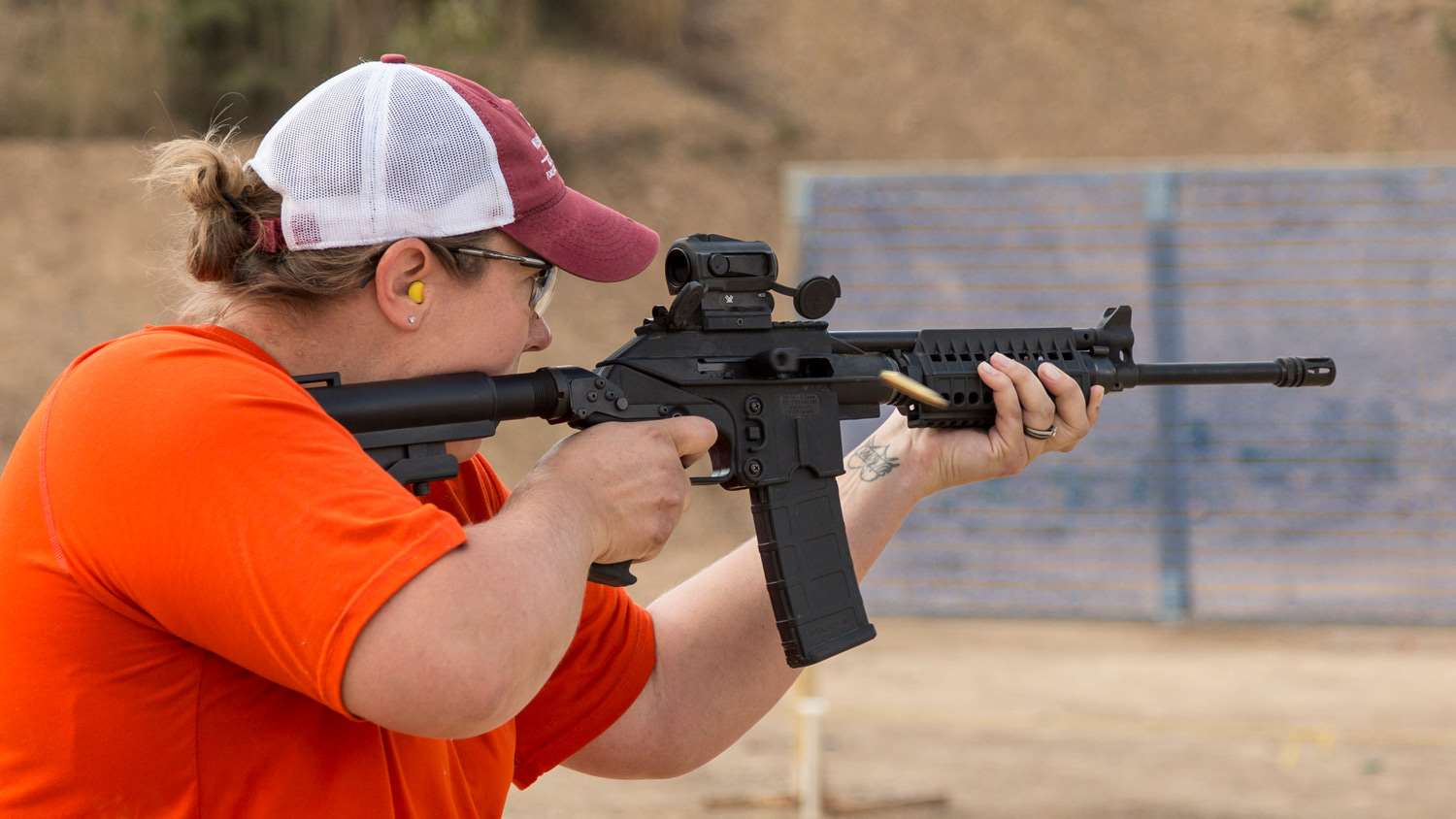
Stage 06
Moving from its position as a side-stage sponsor last year to its main-stage status this year, Devil Dogs sponsored the NRA Precision Pistol event at Stage Six. With Devil Dog 1911 Standard IIs chambered in 9mm Luger, competitors had two 5-minute strings to score 20 precise hits on the paper from 25 yards (10 shots per string).
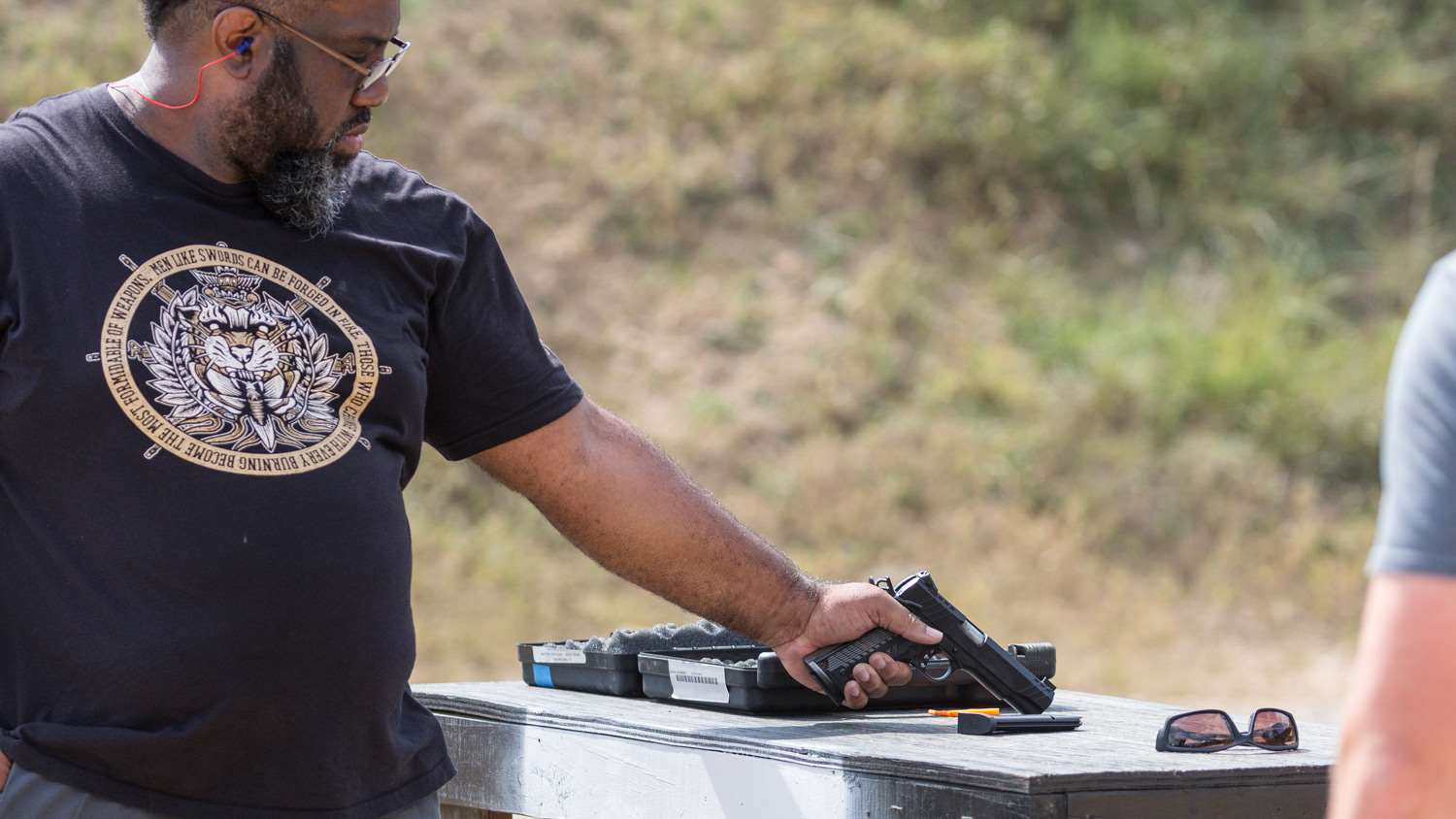
At this stage, I caught up with Tracy Quinn, an exuberant volunteer who raved about the wide range of experiences and opportunities the WSC made available to people. From $200 rifles to $1,500 rigs, and .22 LR rimfires to long-range Lapuas, there are few other places where shooters can come and get outside their comfort zone to this extent, with gear and stages that may be wholly unfamiliar to them. To Mr. Quinn, this was a large part of the draw of the World Shoot, in addition to the great folks who attend and atmosphere they help establish.
Stage 07
Stage seven featured the ever-popular falling-plate event. Competitors were given four magazines—three magazines with six and one with nine—from which they were allowed three sighting shots, before attempting to clean the six-plate rack of 8-inch steel plates four times—twice from 20 yards and twice from 25. Each run from 20 had to be achieved in less than 8 seconds, while the 25-yard shots could take up to 9 seconds. The combination of precision and speed with this contest, particularly with a pistol that may or may not be sighted to your eye, always makes falling plate a fun and challenging event.
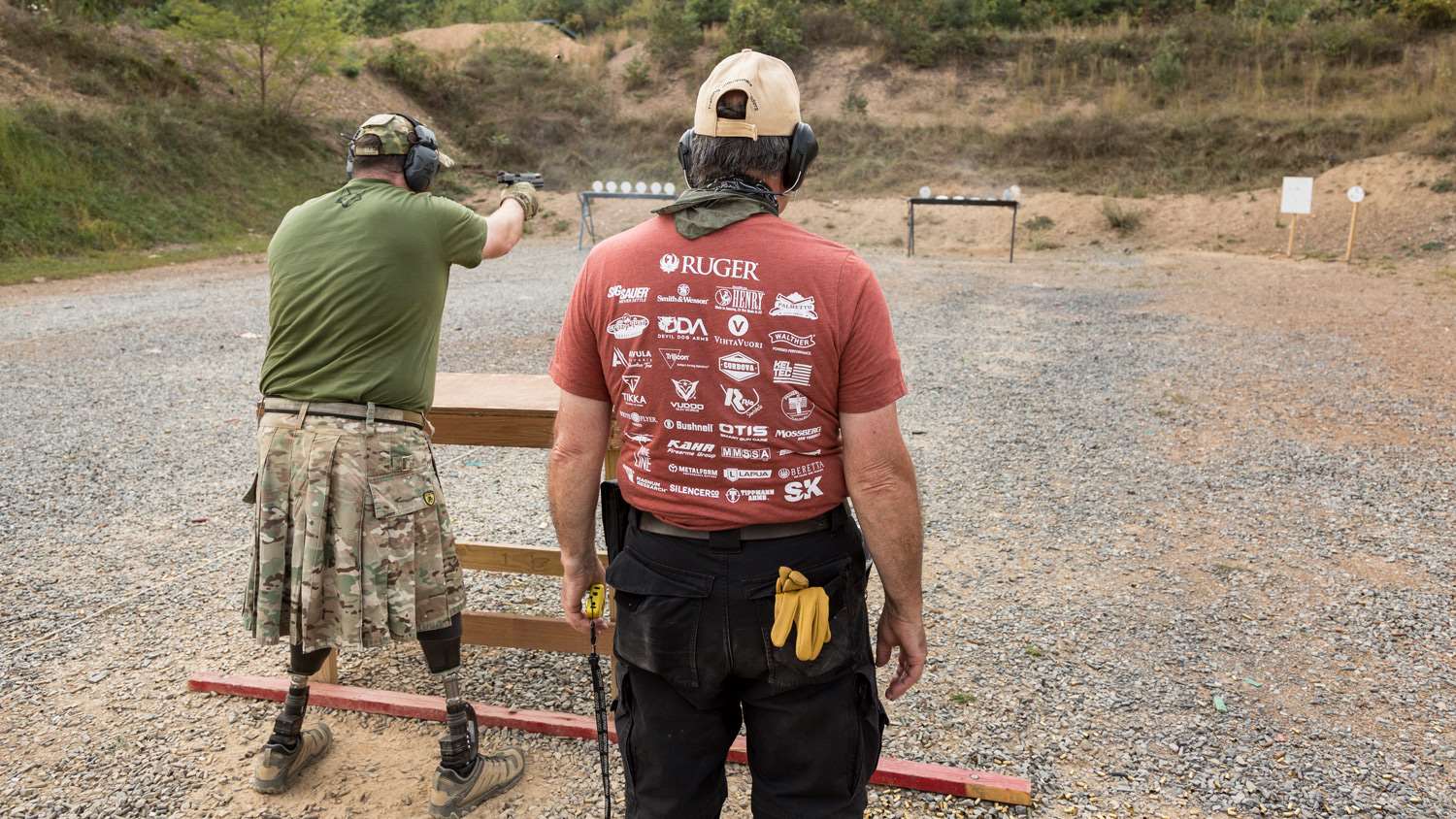
As I myself shot this event just for fun, I can attest personally to the unexpected challenge that last factor presents. While it seems simple, in the heat of the moment, it is fairly easy to forget. In my case, the pistol was shooting several inches high-right, and while my first, second and fourth strings of fire went well, during my third string I completely forgot the sight discrepancy and held dead on every time, only downing a single plate. Just another reminder that, to do well at the WSC, one must be fully dialed-in. Minutiae matter, no matter how trivial they may seem.
Stage 08
Cowboy action. Anyone who happened to read my article from last year knows that this is, hands down, always my favorite event. This year’s setup did not disappoint. Sponsored by Henry and Ruger, the firing line consisted of three Henry Big Boy Classics chambered in .45 Long Colt, set up on a bar with a cutout of John Wayne in the bartender position. The shooter had to pick up each of the three guns, ring three steel targets with one shot from each, then run left and ring steel five times with one revolver, run right and repeat the process with the other revolver. As usual, all competitors, some decked out in the cowboy hats the stage made available, seemed to have a great time with this one.
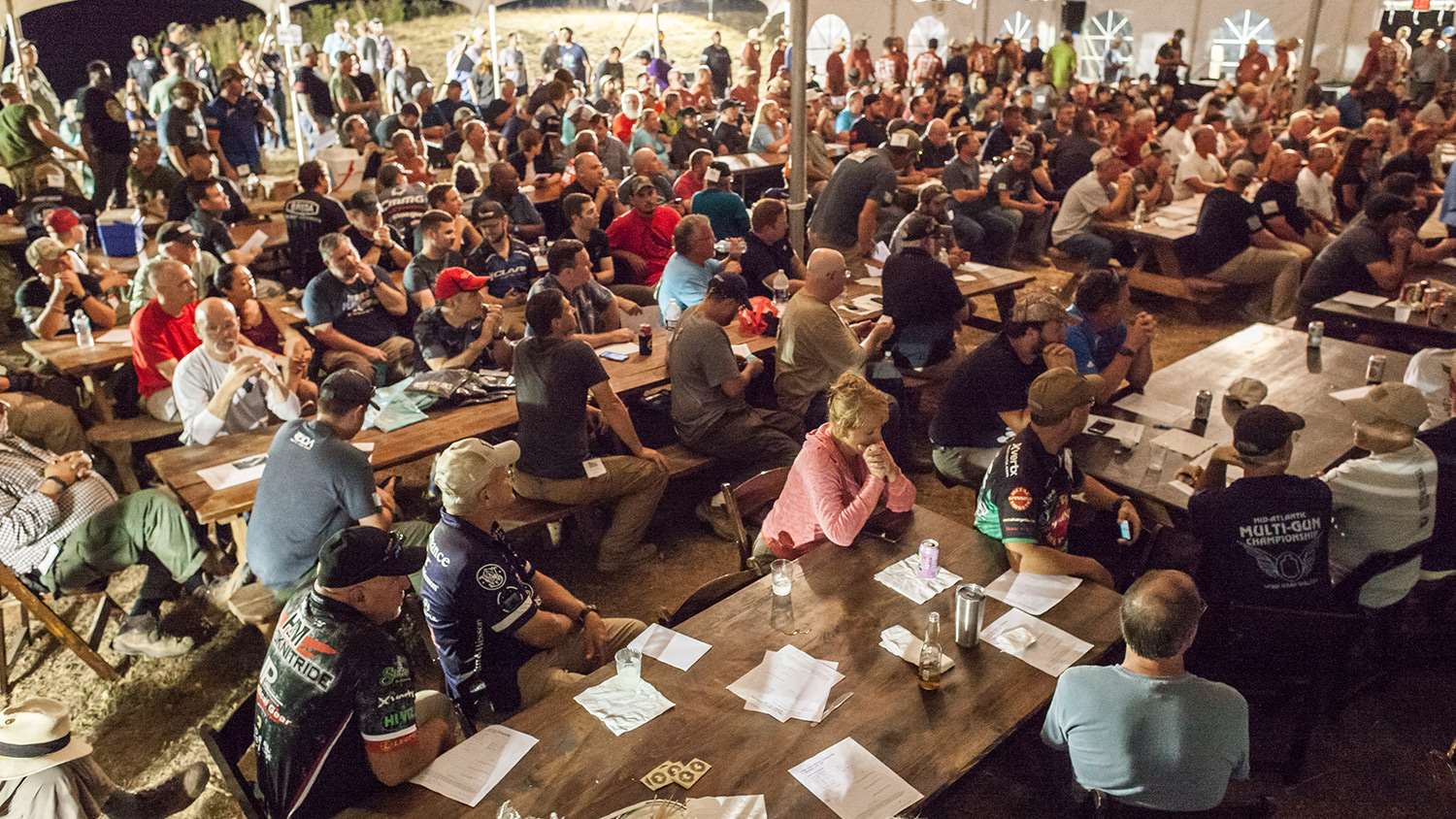
Stage 09
The USPSA event was probably the trickiest stage of the year, mentally speaking. Shot mostly through openings while moving down a hallway (as is typical of such matches), the stage instituted some fairly arbitrary rules, such as—reload must occur as soon as the next magazine is picked up; after reload occurs, one must shoot strong-hand only; and paper must be hit twice at a minimum to score. While this may sound simple, in the heat of the moment, particularly when moving, it is often easy to forget even the basics. It was on this stage that I saw a disqualification for keeping a finger on the trigger while moving to the next target (though the muzzle did stay appropriately pointed at all times), while the latter rule mentioned above caused several people to use their mulligans, to avoid the time penalties incurred by accidentally shooting with both hands. The challenge is part of the fun however, as competitors visibly enjoy the inspection time before their runs, where they try to lay out the best strategy with which to game the course.
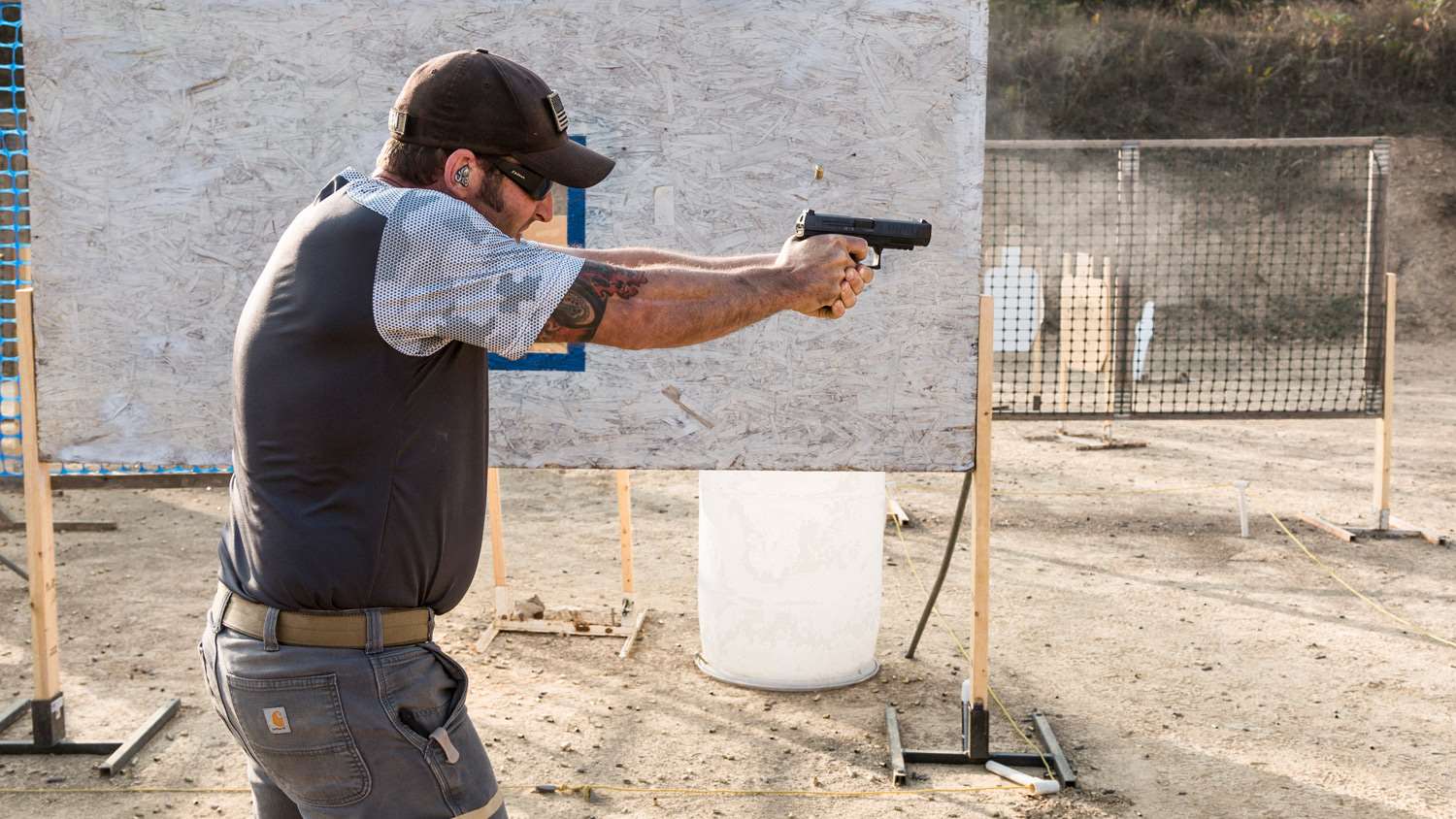
Stage 10
Stage 10, sponsored by Ruger, was the precision rimfire match. Here I had the pleasure of watching seasoned professionals like Chris Cerino and Jerry Miculek go to work, both of whom cleaned the stage (though Chris did unfortunately acquire a 10-second procedural penalty for not having his bolt back when running between the barrier and the tank trap). This was an interesting match to watch, as it was incredibly similar to the Precision Rifle Series (PRS) match held at the following stage, but seemed almost more difficult thanks to the addition of an offhand component.
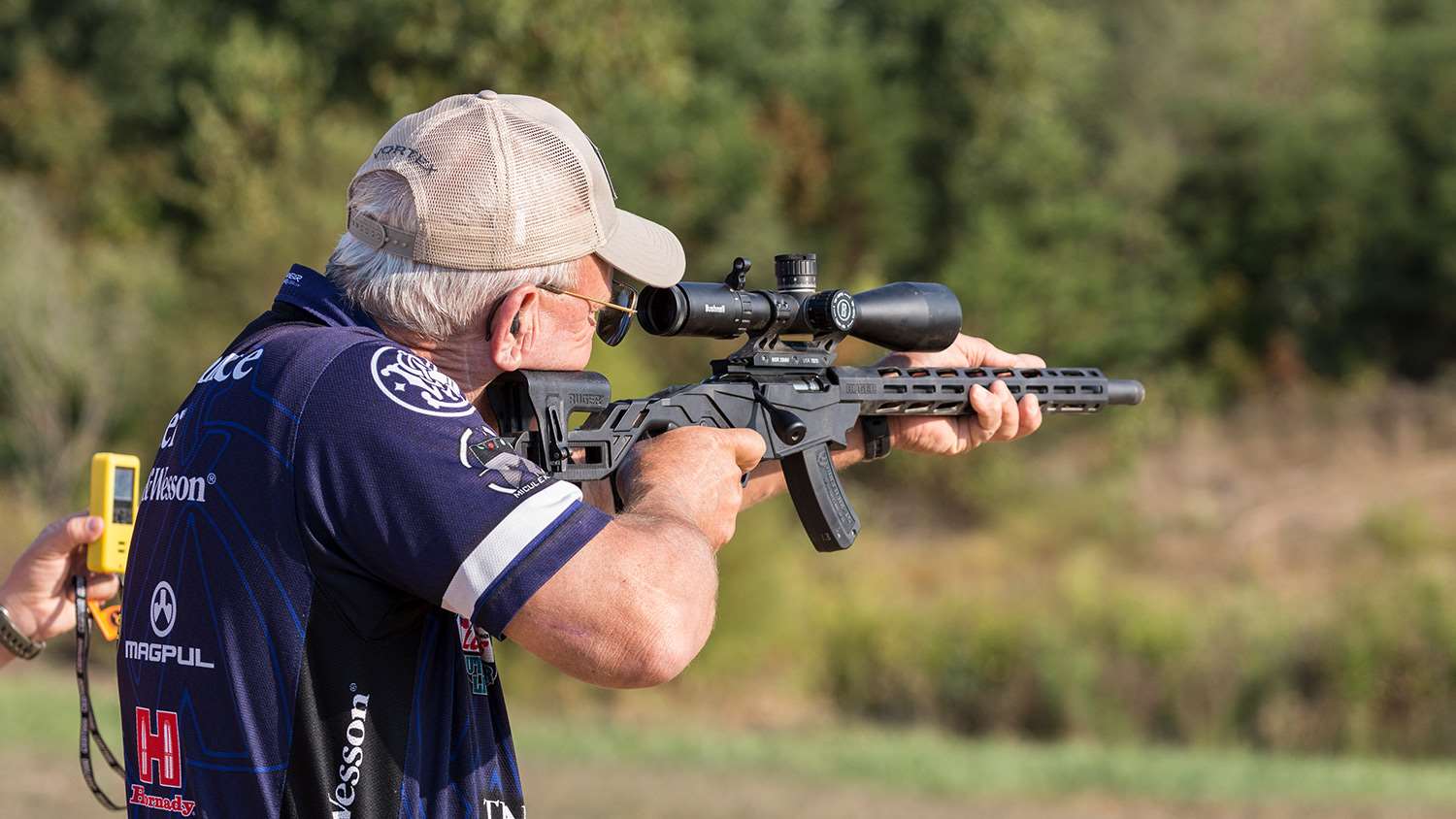
After three sighters, shooters shot three targets (left to right) at 130 yards, from a barricade, then a tank trap and then offhand. All targets had to be hit to move on, and ammunition was limited to 20. While the pros made it look easy, it wasn’t hard to see what a challenge it would be for most of us mortals to clean the stage.
Stage 11
For the PRS stage, I again tagged along with the professionals, for a set of impressive performances. With a 120-second par time to get (up to) 10 rounds off at four 12- to 18-inch targets 460-yards away, with only three sighter shots, this was a real test of precision skill. The opening four shots were fired from the bench, after which competitors moved and fired one from a kneeling rest behind a barricade, then transitioned to a standing rest behind said barricade, and back down the other side in reverse fashion. All targets had to be shot left to right, and use of a rear bag was allowed in all positions.
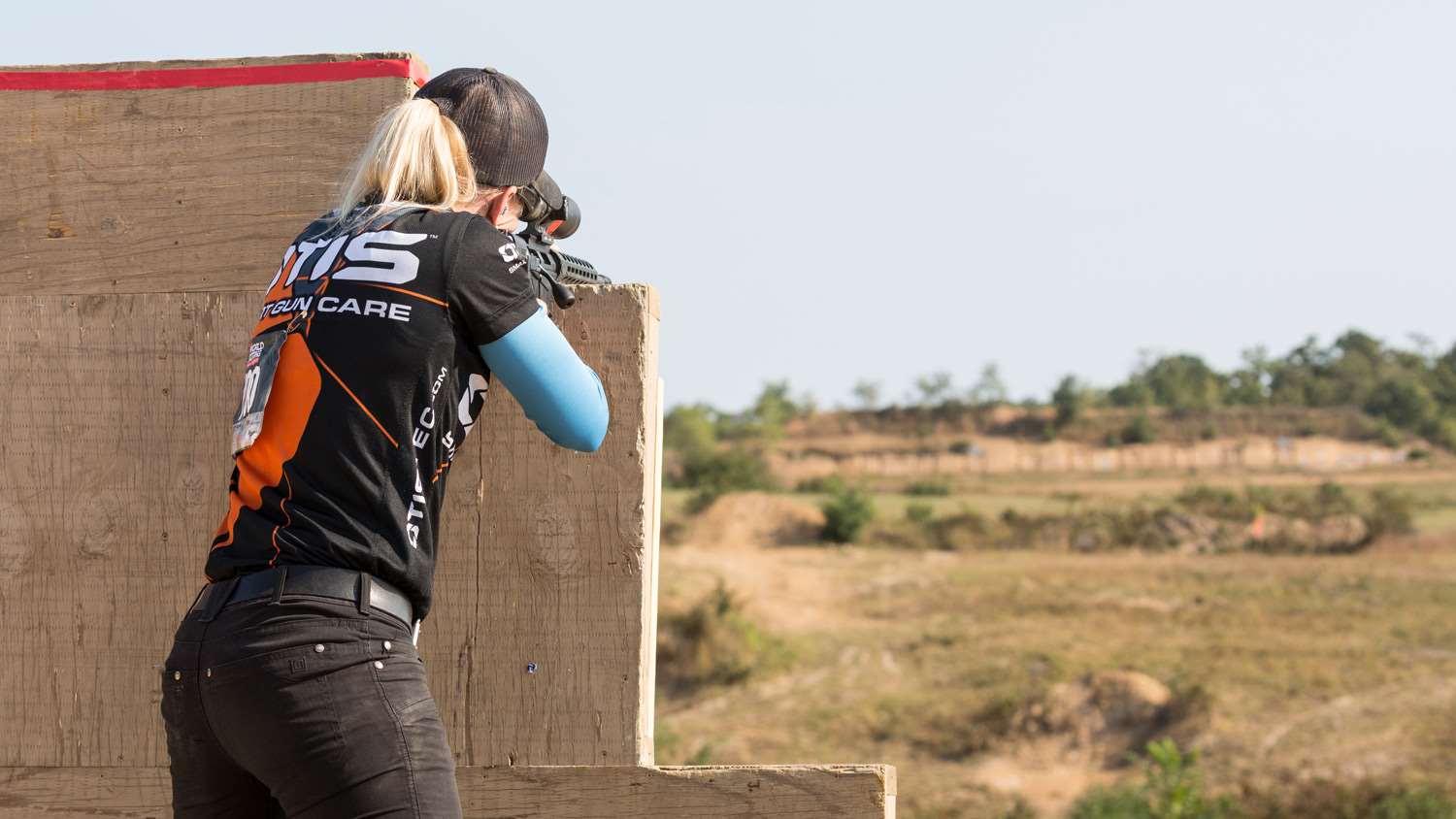
As this appeared a pretty grueling task, I asked staff member Kenneth, from upstate New York, if people seemed to be enjoying his stage. To my query, he gave what was possibly the best, most direct quote of the event. They “wouldn’t come if it wasn’t fun.”
Stage 12
The final stage of the event was NRA Silhouette, though organizers decided to add an additional twist to make sure veteran shooters didn’t feel too comfortable. Here competitors, already shooting with equipment they were unaccustomed to, were made to shoot off even more unfamiliar “cross sticks.” Though the sticks could be an incredible aid, as veteran shooter and SSUSA contributor Dick Jones remarked, “You don’t know till ya do it what’s gonna work”—a stage of experimentation in which many of the shooters became mired. For all the complexity however, quite a few shooters definitely found success, managing to ring all four steel targets twice, left to right each time from 470 yards away.
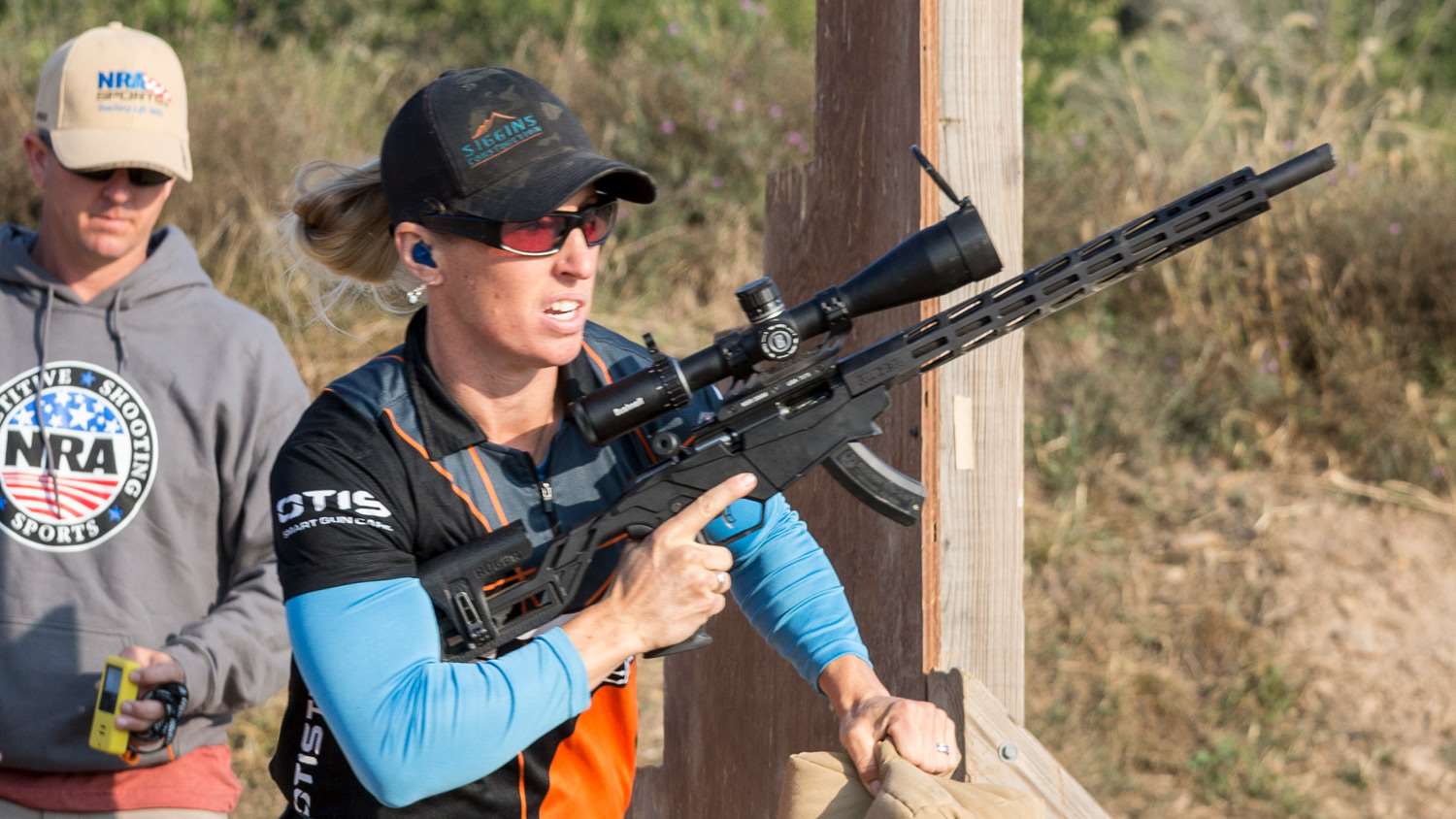
Summation
While its great to read about, there really is no substitute for attending the NRA World Shooting Championship in person. A fun way to experience the many various facets of the shooting world, without a hefty initial investment in any specific one, the WSC is open to all, whether amateur or professional, spectators or shooters.
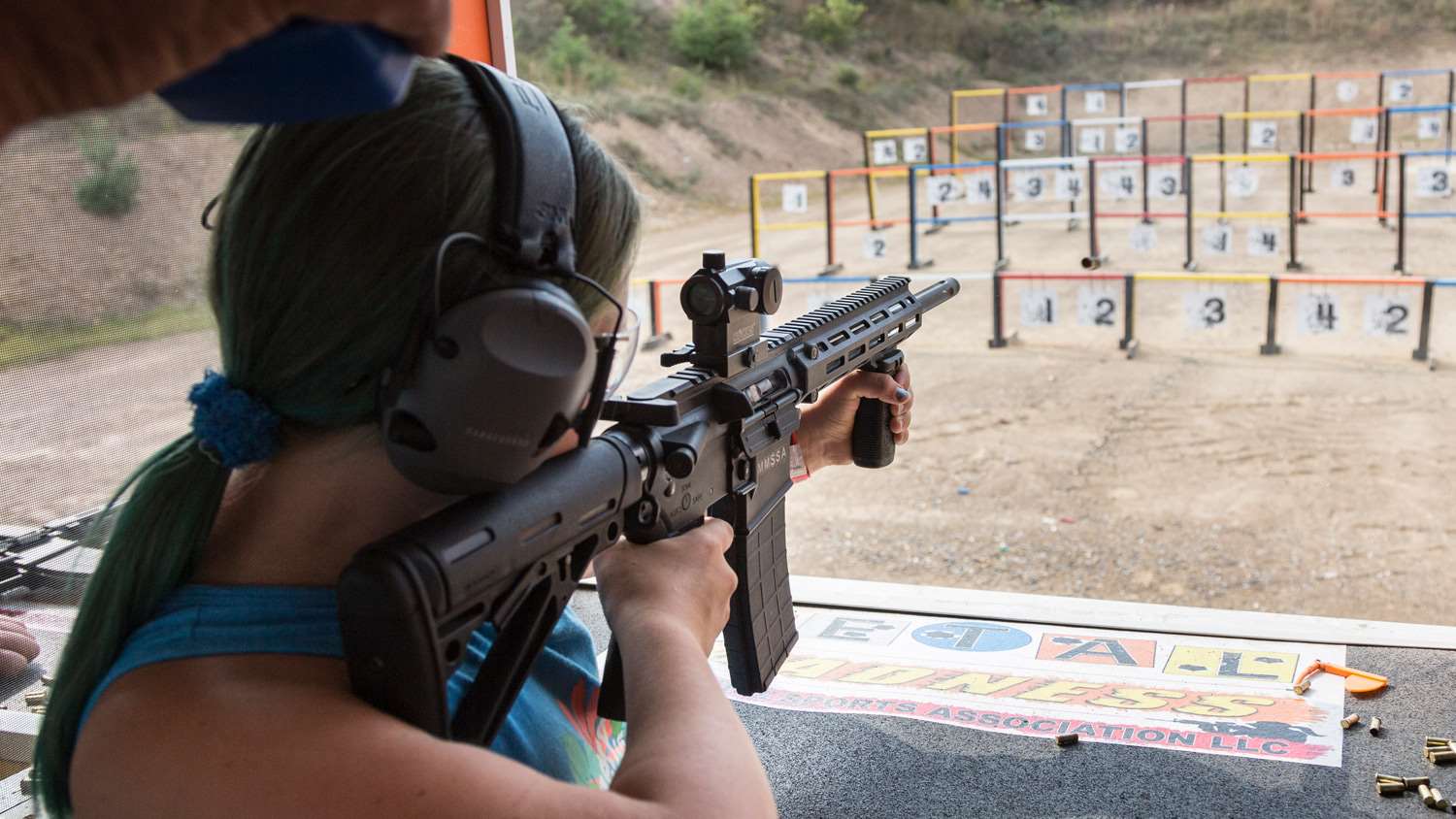
For more information on attending next year’s competition, please visit the website at wsc.nra.org.
All photos by Jesse Snyder.
Read more articles by David Herman:
- Book Review: Small-Bore Rifles A Guide For Rimfire Users
- Review: Rock River 1911A1 NM Hardball
- Metal Madness: Blend Of Accuracy, Speed Proves Popular
- Bisley Shooters Seek 1966 Queen’s Prize
- 5 Proven Pistol Caliber Carbine Choices For Action Shooting
- Tips From Emil Praslick On How To Determine Wind Direction
- How Applied Ballistics Is Advancing Extreme Long Range Technology
- That’s Not A Barrel, THIS Is A Barrel













